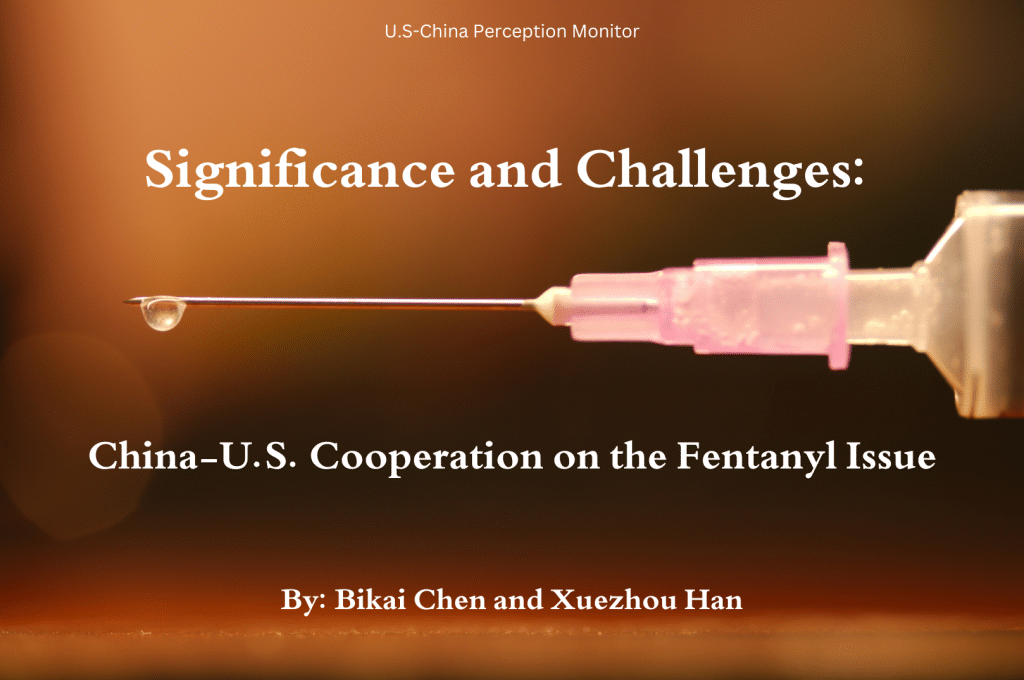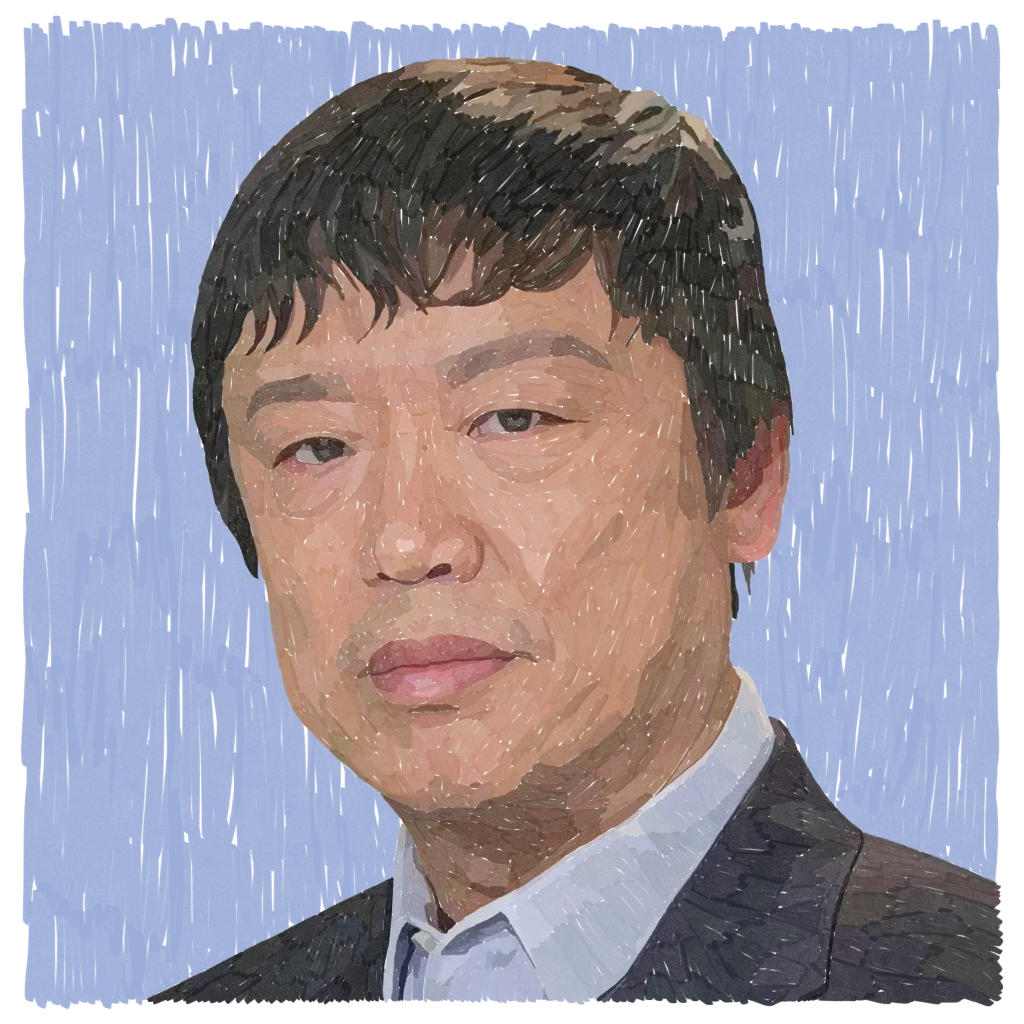Significance and Challenges: China-U.S. Cooperation on the Fentanyl Issue
TRANSLATION: The Two Courses of Action for U.S.-China Competition
The following is a translation of Zhu Ming’s short—but insightful—commentary on Lianhe Zaobao(Zaobao Sunday), the largest Singaporean Chinese-language newspaper. Zhu, an expert on global affairs based in China, is the Vice President of the Chengdu Institute of World Affairs, a research fellow at the Charhar Institute, a visiting professor at the Tibetan University for Nationalities, and a former foreign correspondent for China Daily.
The article exemplifies the mainstream perspective in China on the root cause of U.S.-China competition. To Zhu, the U.S. wants to maintain its hegemony over the rest of the world. In his perspective, the United States has not tolerated any challenges in the past—e.g., the rise of Japan and Europe—and likewise will not tolerate the rise of China. However, to him, China represents the righteous direction of global development and is better prepared to respond to American containment. As a result, Zhu believes China will be the eventual winner of the epic rivalry.
Note that Zhu fails to address challenges in China’s domestic politics, and his employment of the Belt and Road Initiative (BRI)—as an example of China leading a new globalization wave—is exaggerated. Zhu also assumes that the U.S. cannot successfully contain the rise of China and that China will emerge from the competition as a winner.
English
中文
English
“Do we want China to fail?” As Western policymakers and commentators read over a report of this year’s economic forecast at a conference in New York, one asked why a sharp fall in China’s economic growth was listed as a major risk for 2023. “Isn’t that what we want?”
After all, U.S. President Joe Biden has declared on various occasions that he is willing to go to war with China to defend Taiwan. The European Union has likewise described China as a “systemic competitor.” The United Kingdom is amidst a debate on whether to classify China as a “threat.” And Japan has already taken action (against China). But the reality is far more complex. While the West does not want to see its strategic rival grow in strength, a recession in China—already the largest trading partner for 140 nations—would inevitably lead to a catastrophe in the global economy. “The way for Western policymakers to resolve the debate is to ask a different sort of question,” writes New York Times columnist Gideon Rachman. “Not: do we want China to succeed or fail? But: how do we manage the continuing rise of China?”
While the strategic competition between China and the U.S. encompasses multiple dimensions (e.g., ideology, geopolitics, etc.), it is fundamentally a competition of economic interests. The U.S. prefers if China’s economic growth—as soon as the nation becomes a low-end manufacturing base for Wall Street and Western investors to reap the benefits of—stagnates. However, while most “pseudo-industrialized” developing countries stalled at a certain point after industrialization (thereby entering into the “middle-income trap”), China’s growth did not stagnate upon achieving industrialization. Instead, the nation has unacceptably overstepped into the sphere that the U.S. thought belonged only to itself.
During negotiations on China’s accession to the WTO, the U.S.—because of its successful suppression of Europe and Japan, as well as the peaceful dissolution of the Soviet Union and China’s “hiding of strength and biding of time”—wanted to help transform China into a manufacturing base of primary products in exchange for the nation’s complete obedience to the U.S. leadership (similar to that of Japan). The U.S. also wanted to take advantage of China’s economic reform and influence Chinese public opinions.
Later, the U.S. realized that it had miscalculated: economic development did not facilitate the spread of Western democratic thinking in the Chinese society. As China’s share of the U.S. economy exceeded Japan’s share in the past, its military power (five-generation aircraft, aircraft carriers and cruisers, hypersonic anti-ship missiles, etc.), growth momentum and manufacturing volume (already more than the G-7 combined) are far more beyond what Japan could match back then. From the U.S. perspective, China’s independent foreign policies and development strategies are more similar to those of the Soviet Union than of Japan.
“Containing the rise of China” has become a political goal for the West. “Arrogance” aside, debates about China demonstrate that Western governments remain uncertain about how to approach China. Generally speaking, two models of world order are wrestling in the minds of Western policymakers: an old model based on globalization, and a new model based on great power competition.
The old model emphasizes economic development and what the Chinese call “win-win cooperation”; the Belt and Road Initiative is representative of this, with the belief that economic stability and trade growth are beneficial for all countries in the world. This model also encourages the continuation of past approaches to international cooperation on key issues such as climate change. But the U.S. believes that China’s state capitalism constitutes an unfair competition that the West has no chance of winning.
The new model argues that a wealthier China—with enhanced defense technology and military power—is a more threatening nation. The new model believes that global peace and prosperity will be threatened unless China itself changes course or has its ambitions curbed from the outside. The Russian-Ukrainian war and Sino-Russian cooperation reinforce the perspective that the world is now best viewed through the lens of great power competition.
The two models, both involving economic interest, represent the difference between the liberal worldview and the statist one. A China that fails could be a potential threat to the stability of the Western world, and so could a successful China.
For China, the best path forward is to engage in peaceful negotiations with the U.S. after the nation further increases its power. Despite the repeated encroachment by the U.S., China has not shown any initiative to break the current world order, as was confirmed at the U.S.-China summit in Bali. However, China might not have the leisure to wait for the right moment to engage in negotiations with the U.S. It is the case that the U.S., alongside its allies, has already begun to contain China through comprehensive strategic competition, and China’s trust in the U.S. is slowly depleting as a result.
However, unlike Russia, China’s national power is stronger, and its legal right to its core strategic claim (Taiwan) is far more legitimate than that of Russia over eastern Ukraine; China is also more skeptical of U.S. intentions than Russia due to years of being under its containment. As such, China holds the confidence to address the challenge of the century.
中文
“我们希望中国失败吗?”在纽约一个专为西方决策者和评论员举办的研讨会上,与会者翻阅了一份今年经济预测报告,其中一人问道,为什么把中国经济增速骤降列为2023年的一大风险——“这难道不是我们希望的吗?”
毕竟,美国总统拜登一再表示,他愿意为保卫台湾而与中国大陆开战。欧盟将中国描述为“系统性竞争对手”,英国正在辩论是否正式将中国列为“威胁”,日本已经开始行动。但事实可能更为复杂。西方不希望看到战略对手继续发展强大,但已是全球140国家最大贸易伙伴的中国经济,如果陷入衰退,也必将使全世界经济陷入灾难。“西方决策者化解这场争论的方法是提出另一个问题:不是‘我们希望中国成功还是失败?’而是‘我们如何管控中国的持续崛起?’”《纽约时报》专栏作家拉赫曼写道。
中美战略竞争包含了从意识形态到地缘政治多个维度,但根本是利益竞争。美国希望中国在成为华尔街—西方投资人大获其利的低端制造业生产基地后,止步于此,毕竟大部分“伪工业化”发展中国家在工业化进展到一定程度就停滞,进入所谓“中等收入陷阱”。但是中国在完成工业化后没有止步不前,反而踏进美国认为只属于自己的地盘。这超过了美国的接受范围。
由于美国对欧日的成功压制、对苏联和平演变的成功和中国的“韬光养晦”,美国在中国加入世贸组织谈判时,便想以让中国成为美国初级产品生产基地的条件,来换取中国像日本那样对美国领导地位的绝对服从;美国也想借着中国扩大改革开放,影响中国的社会舆论。
后来美国发现自己管控失算,经济发展并没有让西方民主思潮在中国社会泛滥。中国对美国的经济比重超过日本当年对美的占比后,军事实力(五代机、航母和巡洋舰、高超音速反舰导弹等)、增长势头和制造业体量(已超过七国集团总和)远非当年日本可以相提并论。中国一贯坚持的独立自主外交政策和发展策略,对美国来说不像日本,更像苏联。
“管控中国崛起”成为西方政策愿景,撇开“傲慢”不说,对华争论本身就说明西方各国政府目前仍举棋不定。一般来说,两种世界秩序模式正在西方决策者的脑海中缠斗:一种是基于全球化的旧模式,另一种是基于大国竞争的新模式。
旧模式强调经济发展,以及中国人所说的“双赢合作”;“一带一路”倡议是代表,坚信经济稳定和贸易增长对世界各国都有好处。该模式还鼓励在气候变化等关键议题上,延续过去的国际合作方式。但美国认为中国的国家资本主义构成了西方没有任何胜算的不公平竞争。
新模式认为,一个更富裕的中国增强了国防科技和军事实力,不幸变成了一个更具威胁性的国家。新模式的观点是,除非中国自己改弦更张或野心受到外部遏制,否则全球和平与繁荣将受到威胁。俄乌战争和中俄合作强化了这种观点:现在最适合从大国竞争的角度看待世界。
这两种观点是自由主义和国家主义两条路线两种世界观的差异,且都含有“利益”的成分。一个失败的中国可能对西方世界的稳定构成威胁,而一个成功的中国也可能如此。
对中国而言,在实力进一步提升后,再和美国和平谈判界定利益范围,是最好的解决路径。虽然美国一再挑衅,但中国没有流露出主动打破世界格局的意思,这在峇厘岛中美首脑会晤时得到确认。但中国可能等不到和美国真正谈判的时机,美国开始致力于以大联盟和全面战略竞争封堵中国,中国对美国的信任感将逐渐在冲突中消耗殆尽。
但和俄罗斯不同的是:中国综合国力更为强大,对核心战略诉求(台湾)的法理权,要远优于俄罗斯之于乌克兰东部地区;由于多年被美围堵,对其警惕性也强于俄罗斯。中国有信心接受世纪挑战。









